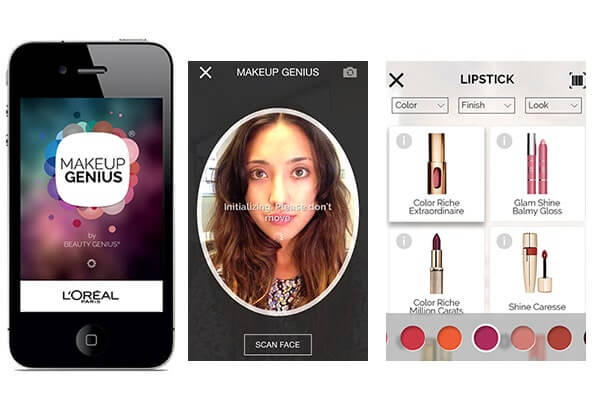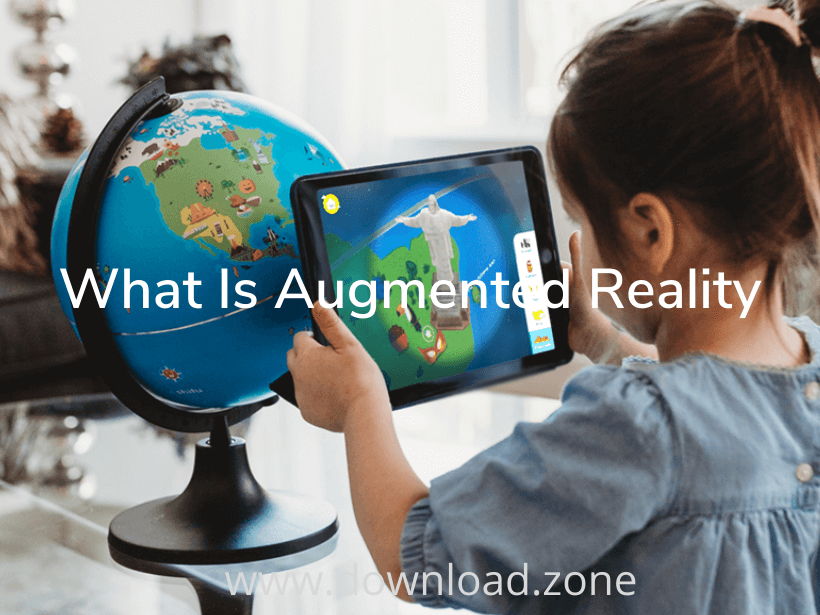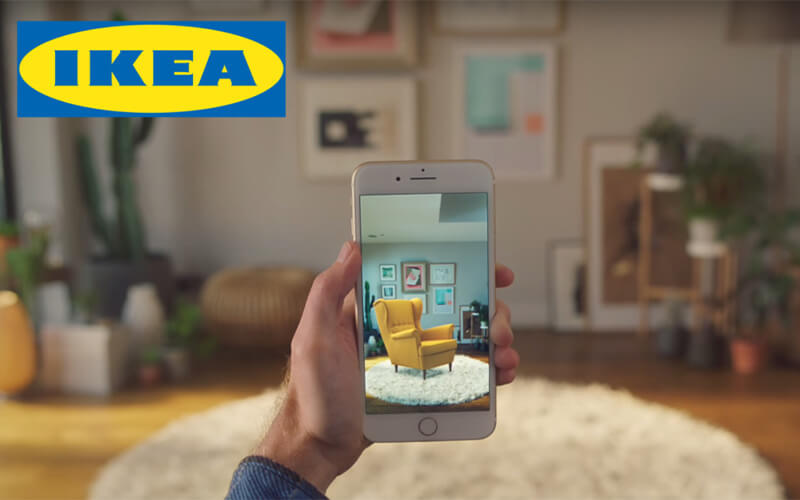What Is Augmented Reality?
Augmented reality (AR) is one of the top discussed technology trends in recent days, and it will be going deeper as AR-enabled smartphones and other gadgets are ready for more accessible around the world. The biggest fact is, AR let us see the real-life environment right in front of us. With the help of AR, you can see how tables and shelves would look in various places around your house with the help of IKEA app, beauty company L’Oréal has a mobile app that will allow users to try out various types of makeup, and it not ended for having fun only, The United States Army is experimenting with augmented reality programs to be used in combat that would help soldiers distinguish between enemies and friendly troops, as well as improve night vision.

ad
Perhaps the most famous Augmented Reality example is the mobile app Pokemon Go, which was released in 2016 and quickly became an inescapable sensation. In the game, players locate and capture Pokemon characters that pop up in the real world—on your sidewalk, in a fountain, even in your own bathroom.

With advances in AR technology, these examples are not that different from what might already be available for your smartphone. Augmented reality is, in fact, readily available and being used in a myriad of ways including Snapchat lenses, in apps that help you find your car in a crowded parking lot, and in a variety of shopping apps that let you try on clothes without even leaving home.
The potential of augmented reality is endless. It’s only a matter of time before this technology becomes a part of our everyday lives. We’re not quite there yet, but a few companies and organizations are making great strides with this technology today.
ad
“A few innovative professionals are now even using augmented reality in their business cards.”
What is Augmented Reality?
Augmented reality is often presented as a kind of futuristic technology, but a form of it has been around for years. For example, the heads-up displays in many fighter aircraft as far back as the 1990s would show information about the attitude, direction, and speed of the plane, and only a few years later they could show which objects in the field of view were targets.
Augmented reality (AR), this technology superimposes a CG image on a user’s view of the real world. Unlike virtual reality, where everything a user sees is generated by a computer, augmented reality keeps the real-world focus, but just adds elements that aren’t really there to enhance the user’s experience. It is an experience where designers enhance parts of users’ physical world with computer-generated input. Designers create inputs—ranging from sound to video, to graphics to GPS overlays and more—in digital content that respond in real-time to changes in the user’s environment, typically movement.
This application has been used everywhere from the healthcare tech industry to retail and even manufacturing – Google is reintroducing Google Glass as an augmented reality tool for the workforce.

Top Augmented Reality Examples
Games aside, there are as many uses for AR in our everyday lives as there are Pikachu on the loose in Pokemon GO. Here are just a few more augmented reality examples:
AR In Automobiles
- Enhanced navigation systems use augmented reality to superimpose a route over the live view of the road.
- More and more car manufacturers are offering their potential buyers the possibility of visualizing their future car and adapting it to their tastes and needs.
AR In Education
- Many students are already benefiting from notebooks that utilize special markers that react to being placed in front of a computer screen or a mobile device offering 3D images.
AR In Sports
- During football games, broadcasters use AR to draw lines on the field to illustrate and analyze plays.
- Runners, cyclists, mountaineers, and hiking enthusiasts can now explore their routes in 3D by projecting them into any surface. This allows them to plan their next adventures and share their activities.
AR In Retail and Advertising
- From trying on clothes virtually to watching an interactive campaign on a wall in the middle of the street, the sales and promotion potential offered by AR to brands is incalculable.
- Furniture and housewares giant IKEA offers an AR app (called IKEA Place) that lets you see how a piece of furniture will look and fit in your space.
- Many companies use AR to enable clients to check in real-time how their house will look once the work is completed or how a new armchair will fit in with the rest of the decor.
AR In Military and Defense
- Military fighter pilots see an AR projection of their altitude, speed, and other data on their helmet visor, which means they don’t need to waste focus by glancing down to see them.
- The United States Army is giving soldiers improved situational awareness with the use of AR technology. The tech, called “Tactical Augmented Reality” (TAR), is essentially an eyepiece that helps soldiers precisely locate their positions as well as the locations of others—both friend and foe.
AR In Analytics
- It sounds like science fiction but there is already a service capable of recognizing a person’s face and simultaneously showing the social networks in which he or she is active.
AR In Healthcare
- Neurosurgeons sometimes use an AR projection of a 3-D brain to aid them in surgeries. Through tablets or holographic glasses, doctors can visualize organs in 3D or consult the patient’s history before or during a surgical intervention.
AR In Tourism
- At historical sites like Pompeii in Italy, AR can project views of ancient civilizations over today’s ruins, bringing the past to life.
- Perfect for travelers. Just take a picture of any text in front of you (a report, advertisement, recipe, etc.), and get an instant translation.
AR In Space & Aviation
- Ground crew at Singapore’s airport wear AR glasses to see information about cargo containers, speeding up loading times.
- By focusing your mobile device’s camera to the sky, you will be able to identify stars, constellations, planets, and other celestial bodies, in addition to receiving extra information about them.
- We continue to climb heights… Using smart glasses, astronauts now have the technology they need to receive visual instructions in case they have to make repairs during their expeditions.

AR vs.VR
This is rather different from virtual reality. Virtual reality means computer-generated environments for you to interact with, and be immersed in. Augmented reality (also known as AR), adds to the reality you would ordinarily see rather than replacing it.
Despite being two sides of the same coin, these two technologies represent two different revolutions. While Virtual Reality allows you to create a virtual world from scratch (with everything you could possibly want to shape a fantasy world), what Augmented Reality does is add virtual elements (additional information in the form of graphics or images) to our real environment.
Apple CEO Tim Cook is very clear on this point: “Augmented Reality [AR] is larger than Virtual Reality [VR] because this gives the capability for both of us to sit and be very present talking to each other, but also have other things visually for both of us to see. It will be the next revolution, as was the smartphone during its time.”
Today, the scope of AR in both work and personal environments is unquestionable. However, the question is: Will there be ‘another Pokemon GO’ that will cement the future of this technology?
The difference between Augmented Reality and Artificial Intelligence
We have seen augmented reality examples and we could learn that it’s the technology that let us feel things like real through a various combination of technologies but it’s not the artificial intelligence. Both are different from design to implementations. From the surface, augmented intelligence looks nearly identical to artificial intelligence, but there is one major difference: There’s a person, as a programmer, pulling the strings behind the scenes in each and every possible scenario the AI program may need to act upon or telling the computer how it needs to learn.
While machines using augmented reality can often act and react like humans, these actions are only based on human inputted information. In other words, and in very simplistic terms, a software developer inputs several “if this, then that” scenarios and creates a near-real-world reaction that a machine is able to act upon. Even when using advanced machine learning, a developer is inputting the logic of learning and the reasoning behind it. The key factor that makes this intelligence augmented is the ongoing manual intervention which dictates how, if and when a machine reacts.
The future of AR
By seeing these augmented reality examples, you may scale the future of this innovative technology. This doesn’t mean that phones and tablets will be the only venue for AR. Research continues apace on including AR functionality in contact lenses, and other wearable devices. The ultimate goal of augmented reality is to create a convenient and natural immersion, so there’s a sense that phones and tablets will get replaced, though it isn’t clear what those replacements will be. Even glasses might take on a new form, as “smart glasses” are developed for blind people.
Like any new technology, AR has a lot of political and ethical issues. Google Glass, for example, raised privacy concerns. Some worried that conversations might be surreptitiously recorded or pictures snapped or thought that they might be identified by face recognition software. AR glasses, contacts, and more, like the Glass – X and Google Lens, though, are moving ahead in production and sales.
ad


Comments are closed.